Problem 36: Root counting ( ) 1999 Paper III
- (i)
- Let ,
where
is a given constant. Show that
and sketch the graph of
in the three cases ,
and .
Hence, or otherwise, show that the equation
has exactly one real root if and no real roots if .
- (ii)
- Determine the number of real roots of the equation
in the different cases that arise according to the value of the constant .
Note: If , then .
Comments
In good STEP style, this question has two related parts. In this case, the first part not only gives you guidance for the second part, but also provides a result that is useful for the second part.
In part (ii) of the original question you were asked to determine the number of real roots in the cases and . I thought that you would like to work out all the different cases for yourself — but it makes the question considerably harder, especially if you think about the special values of as well as the ranges of .
For part (i) you need to know that as . This is just a special case of the result that exponentials go to zero faster than any power of .
For part (ii), it is not really necessary to do all the sketches, but I think you should (though you perhaps wouldn’t under examination conditions) because it gives you a complete understanding of the way the function depends on the parameter . For the graphs, you may want to consider the sign of ; this will give you an important clue. Remember that, by definition, .
Solution to problem 36
(i) Differentiating gives which is non-negative because the square is non-negative and the exponential is positive.
There is one stationary point, at , which is a point of inflection, since the gradient on either side is positive.
Also, as , and as . The graph is essentially exponential, with a hiccup at . The differences between the three cases are the positions of the horizontal asymptote () and the place where the graph cuts the axis (above or below the axis?).
Since the graph is increasing and , the given equation has one real root if and no real roots if .
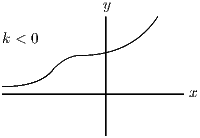
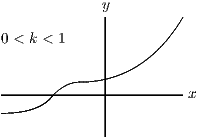
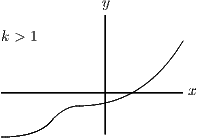
(ii) First we collect up information required to sketch the graph, as in part (i). We have
, as , as , (which we know from the first part can only be zero only if ), .
The important values of seem to be , and so we will have to consider four cases.
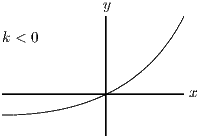
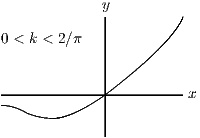
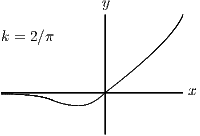
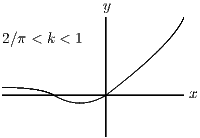
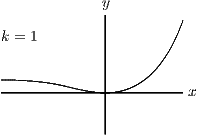
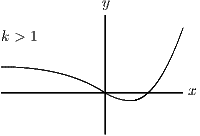
As you see, the equation has one root if and two roots otherwise. The case can be thought of as having one root at or as having two roots, both at (it is a double root).
Post-mortem
I think I made a bit of a meal of this; got carried away with the sketches. But it was reassuring (compulsive, I found) to consider every case. My explanation is pretty compact, so I think you’ll have to work it through on your own to convince yourself of the details.







